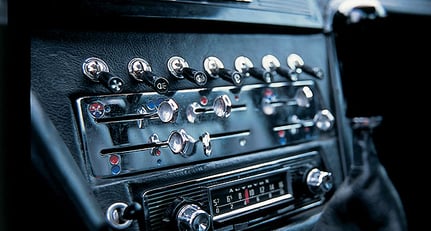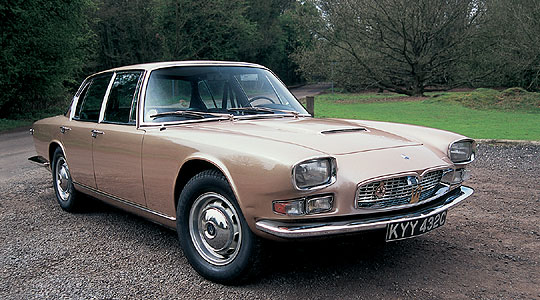
The following is an extract from Simon Park's feature in Auto Italia magazine, Issue 121 2006. For access to the full feature, plus articles on a special 4-litre Ferrari 250 GT Lusso, the Lamborghini Murciélago LP640, the Serenissima 538 Jet Coupe, a report on the 2006 Tour Auto and much more, see www.auto-italia.co.uk
‘A bit of foreign’ can make the mundane sound mellifluous. Take ‘Maserati Four Doors’, for instance: funky in Frankfurt perhaps, but soulless in Solihull. ‘Quattroporte’, on the other hand, has that exotic ring to it. And if ever a dynasty of cars deserved a resonant moniker it’s these mighty Masers.
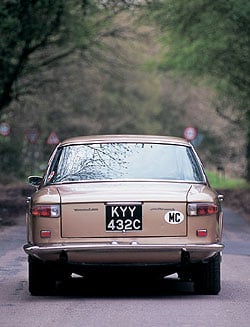 It was the enthusiasm with which its ultra-exclusive 5000GT (just 34 built between 1959 and 1966) was greeted in plutocratic circles that got Maserati thinking about something similar for larger-scale production. The four-door proposal polarised opinion in the Modena boardroom from the start. In the early ’60s, large ultra-high performance saloons, common as they are today, barely existed. The gargantuan Facel Vega Excellence struggled to survive, and the lukewarm reception accorded Aston Martin’s DB4-engined Lagonda Rapide in 1961 didn’t bode well for the genre either. Maserati’s decision to follow in their footsteps was therefore a brave one, taken only after some very frank exchanges of views.
It was the enthusiasm with which its ultra-exclusive 5000GT (just 34 built between 1959 and 1966) was greeted in plutocratic circles that got Maserati thinking about something similar for larger-scale production. The four-door proposal polarised opinion in the Modena boardroom from the start. In the early ’60s, large ultra-high performance saloons, common as they are today, barely existed. The gargantuan Facel Vega Excellence struggled to survive, and the lukewarm reception accorded Aston Martin’s DB4-engined Lagonda Rapide in 1961 didn’t bode well for the genre either. Maserati’s decision to follow in their footsteps was therefore a brave one, taken only after some very frank exchanges of views.
Technical Director Ing Giulio Alfieri was the father of the Quattroporte. His ambitious design incorporated a steel monocoque and De Dion rear suspension, but he felt that the 5000GT’s racer-sharp engine needed ‘softening’ for this higher-volume application. The radical, gear-driven camshafts – four of them – of the 450S-based V8 had already given way to more conventional chain drive in the later 5000GTs, but four Weber carbs now replaced Lucas fuel-injection and reductions to both bore and stroke brought capacity down to 4136cc. A ZF five-speed manual box was standard, with a Borg Warner automatic option.
Bodywork was entrusted to Pietro Frua, who revisited his 1962 rendition of the 5000GT, built for the Aga Khan. Their exquisite front ends are almost identical, but the longer QP is a lot bulkier towards the back. The car finally emerged at the 1963 Turin Show, and epithets such as ‘the world’s fastest saloon’ and ‘the Italian Rolls-Royce’ swiftly followed.
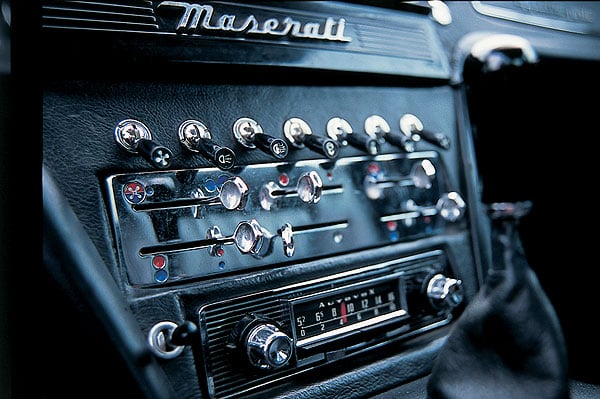
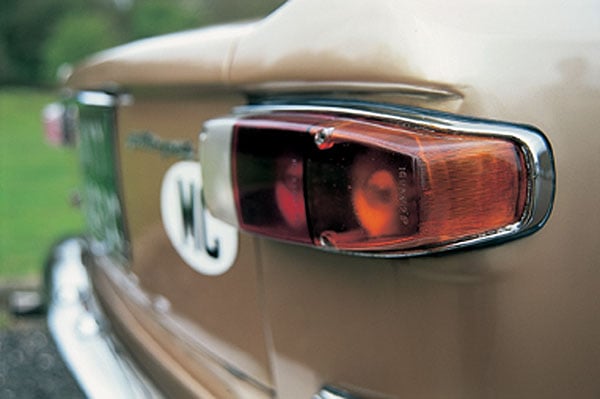
With 260bhp at its disposal the QP1 was lightyears quicker than any contemporary Roller (and dearer in the UK, as well). In November 1965 the second series was introduced, identifiable by its twin headlights (to comply with US regulations). More significantly, the De Dion rear end was replaced by leaf springs – notionally, to improve ride quality and noise levels – and the previously rather austere interior sprouted acres of Rolls-style woodwork. In 1968 the Mexico’s 4719cc engine became an option, offering an additional 30bhp and 150mph. Production ended the following year, after around 770 examples had been. Five years would elapse before a replacement appeared – a very different machine bearing all the hallmarks of new proprietors, Citröen.
This gold example, a manual 4.1-litre from 1964, has been in the same family since new, the present owner’s uncle having bought it straight off the Geneva Show stand that year. It has never been restored and oozes originality – paintwork, leather, the lot.
Once you start the engine, you can forget the ‘Italian Rolls’ bit – this V8 bellows ‘Maserati’ at you, with feeling. Utterly belying the car’s dignified, foursquare appearance, its beguiling growl is always present. It’s too intrusive for Roller Man, without a doubt, but I wouldn’t tire of its company on a quick transcontinental trek. And it pulls the old thing along with aplomb. The power band is linear, and strong all the way from around 1500rpm to the 5k limit. The performance isn’t eye-popping by today’s standards, but it’s far more than adequate. Accessing it, too, is easy, thanks to the electric-switch precision of the ZF gearchange. Your feet have an equally easy time, with a light clutch and a highly efficient brake pedal ideally located for toe-heeling. Round the twisty bits, you’re twirling that lovely Bakelite-rimmed Personal wheel a fair bit. Typical of the period, there’s considerable free play around the straight-ahead position and an exponential weighting-up as you apply lock.
That initial vagueness tends to exaggerate the understeer, which you expect, but which in truth is quite mild. In fact, the QP changes direction with surprising agility for a car 16ft 4in long and weighing well over a ton-and-a-half.
Someone forgot to tell this original Quattroporte, the ‘paterfamilias’, what its role in life was intended to be. But then Maserati could only ever be true to its instincts, and play to its strengths. The result was a sportscar masquerading as a limo, a benchmark in the history of the serious sports saloon, and an absolute hoot to boot – in any language.
|
Words by Simon Park and pictures courtesy of Michael Ward.
See www.auto-italia.co.uk or call +44(0)1858 438817 for back issues and subscriptions. |
ClassicInside - The Classic Driver Newsletter
Free Subscription!
